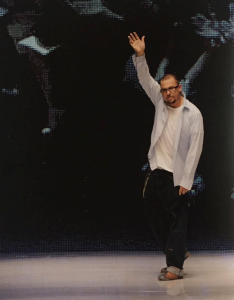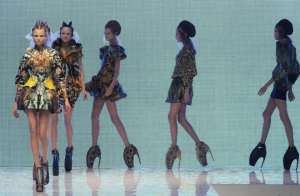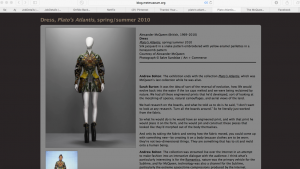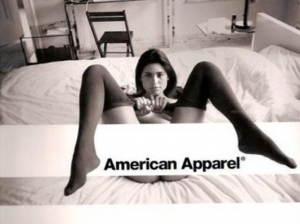Sanda Millers has written the article ‘Taste, Fashion and the French Fashion Magazine’ which describes the introduction of the Fashion Magazine and what happened as a result of this. A main concept she talks about is the effect the fashion magazine has had on society’s ‘taste’. An example of what she writes is ‘But whilst taste was indeed borrowed from aesthetic discourse, its application to fashion was, we could say, revolutionary, for these fashion magazines became – as pointed out at the beginning – more than repositories of taste; rather, they prescribed it.’ (Miller 2013). This was not the purpose though when the first fashion magazine started which was Le Mercure Galant in 1672. ‘Moreover it could be argued that the emphatic linking of the words fashion and taste in its title testifies to the unexpected role the concept of taste was to play within the newly emerging context of the fashion magazine’ (Miller 2013) Miller hints at how the Fashion Magazine was unsure of it’s purpose.
We are told how the first accepted fashion magazine was ‘initially conceived as a gazette aimed to cover the arts, theatre and literature, as well as society reports and a gossip column’ (Miller 2013). I think the ‘unexpected role’ most likely came from the popularity of the items discussed within the magazine, such as the theatre as it is likely only the ‘best’ shows would be discussed which in turn gave the magazine credibility for what is good taste. Perhaps the magazines had the credibility to be able to start to ‘prescribe taste’ because they showed the style of the French Courts and Aristocratic circles. With these people’s style included within the magazine, who are so high up in society automatically gives the magazine authority on taste. Also, the way in which the magazines were displayed could almost be thought as tasteful as the fashion illustrations were drawn by famous artists. With this publicity society can now see a new and alternative view on fashion which they come to like, resulting in their opinion on ‘good taste’.
With the fashion magazine ‘prescribing taste’, people want to be able to wear what is thought of as good taste. Elizabeth Wilson explains how ‘Railways, the telephone, the cinema and the mass circulation of newspapers and magazines intensified the rush and pace of modern life … This meant that fashion became even more important than it had been in the pre-industrial city. It’s circulation of images was itself a form of mass communication’ (Wilson 1985). I think that this highlights how the fashion magazine makes people aware of style and therefore good taste, with society easily being able to view the popular tastes from all over the country.
‘But it is not simply because la passante distinguishes herself through her appearance that she is an appropriate figure of fashion discourse. Her status as the object of a fugitive encounter captures the ephemerality of both fashion and modernity, making her one of their ideal symbols’ (Rocamora 2009) This again highlights how fashion magazines are so influential on taste. The imagery that is used within the fashion magazine also shows a fashionable lifestyle.
Having read these articles I think that the introduction of fashion magazines did have an impact on societies taste. This makes me wonder how our taste is being influenced nowadays with images so easily available over the internet. If the taste of society changed so quickly with the introduction of railways then our view on what is good taste must be too. However with the wider amount of sources available to us maybe this means we are more accepting of different tastes.
Bibliography
Wilson, E. (1985) Adorned in Dreams: Fashion and Modernity, London. Virago
Miller, S (2013) Fashion Media Past and Present, London. Bloomsbury
Rocamora A (2009) Fashioning the City Paris Fashion and The Media, London. I.B. Tauris & Co Ltd




